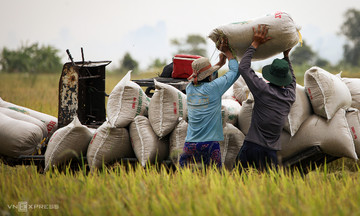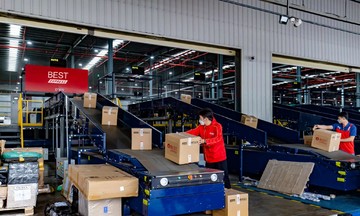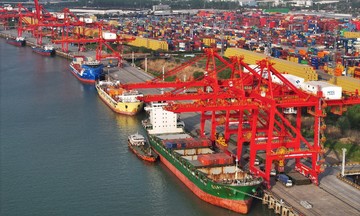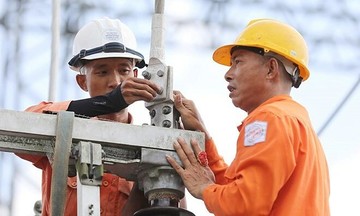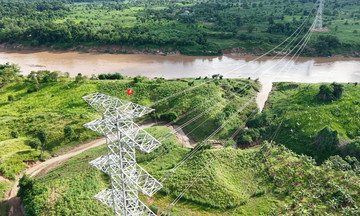This assessment was made by Pham Vu Thang Long, chief economist of Ho Chi Minh City Securities Corporation (HSC), at the launch of the World Bank (WB)'s Vietnam economic update report on 8/9.
Some specific tariffs announced by the HSC representative include electronics (12%), furniture (22%), textiles (40%), and footwear (34%). These figures were calculated based on import value, tax revenue from Vietnam and other countries on the US International Trade Commission (USITC) portal.
 |
Pham Vu Thang Long, chief economist of HSC, at the event. Photo: WB |
Pham Vu Thang Long, chief economist of HSC, at the event. Photo: WB
Long said Vietnam is in a better position than many competitors, based on average tariffs and sector-specific tariffs from the US. The HSC chief economist calculated that the average US tariff on Vietnamese goods is nearly 18%, compared to 22.2% for Indonesia, 28.2% for China, and 27% for India.
He believes it is difficult for American businesses to switch suppliers, as Vietnam is among the top 5 largest exporters of 25 goods with export turnover exceeding 1 billion USD to the US market.
Furthermore, when broken down by specific sectors, tariffs on Vietnamese goods are still lower than those of main competitors.
For instance, the US tariff on Vietnamese electronics is 12%, lower than 36% for Chinese goods and 34% for Indian goods. Furniture faces a 22% tariff, lower than China's 49%. Textiles face a 22% tariff, lower than China's 50% and India's 56%.
However, Sacha Dray, a WB economist, warned that some of Vietnam's export sectors are "particularly dependent" on the US, such as textiles, footwear, and furniture. Experts recommend that Vietnam diversify its input sources and utilize its 17 free trade agreements (FTAs) more effectively.
In addition to uncertainties in trade policy, weakening global growth prospects and declining demand from major trading partners are expected to slow Vietnam's growth. The WB forecasts Vietnam's GDP growth for 2025 at 6.6%, slowing to 6.1% in 2026, before recovering to 6.5% in 2027, thanks to a revival in global trade and maintaining its advantage as a competitive manufacturing destination.
To support growth and mitigate external risks, the report recommends Vietnam increase public investment, manage risks in the financial system, and promote structural reforms. "If implemented effectively, public investment will both address infrastructure gaps and create jobs," said Mariam J. Sherman, WB Country Director for Vietnam, Cambodia, and Laos.
Sherman also recommends Vietnam promote reforms to strengthen essential services, build a green economy, develop human capital, and diversify trade. These are key factors to help Vietnam mitigate global risks and maintain long-term growth.
With the ambition of becoming a high-income country by 2045, Adam McCarty, chief economist and founder of the consulting firm Mekong Economics, recommends Vietnam set smaller goals for every 5-10 years, along with measurement tools.
A typical measurement initiative that Vietnam could replicate is the Provincial Competitiveness Index (PCI). For example, Vietnam could have about 20 PCI-like indices to help the country achieve its 2045 goal, with practical measures such as the level of support for the private sector. He recommends that this index should be objective, transparent, and put measurement pressure on all levels of leadership.
Thuy Truong



